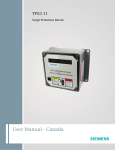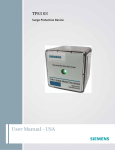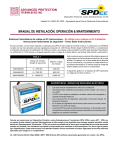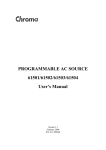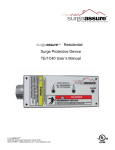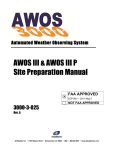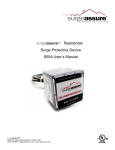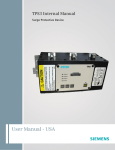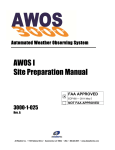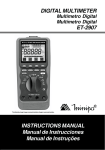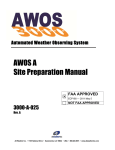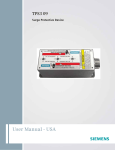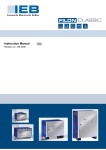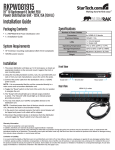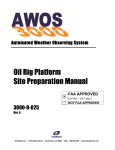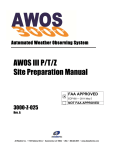Download User Manual
Transcript
TPS3 03 DC For DC Photovoltaic Applications Surge Protective Device DC Voltage Photovoltaic System Instructions – Do Not Use for AC Voltage Installation Save These Instructions - This manual contains important instructions that shall be followed during installation and maintenance of the power system. User Manual - Canada V WARNING - Hazardous Voltage & Shock Hazard Failure to Follow These Instructions Could Result in Death or Serious Injury • • • • • • Only qualified licensed electricians should install or service SPDs Hazardous voltages exist within SPDs SPDs should never be installed or serviced when energized Use appropriate safety precautions including Personal Protection Equipment Failure to follow these instructions can result in death, serious injury, and/or equipment damage. This manual shall be read in entirety prior to installing Bonding and Grounding Hazard Verify that the neutral conductor in the service entrance equipment is bonded to ground in accordance with the National Electrical Code (NEC®) and all applicable codes. Verify that the neutral terminal (XO) on the secondary side of distribution transformers are grounded to the system ground in accordance with the NEC® and all applicable codes. During installation into an electrical system the SPD must not be energized until the electrical system is completely installed, inspected and tested. All conductors must be connected and functional including the neutral (if required). The voltage rating of the SPD and system must be verified before energizing the SPD. Failure to follow these guidelines can lead to abnormally high voltages at the SPD. This may cause the SPD to fail. The warranty is voided if the SPD is incorrectly installed and/or if the neutral conductor in the service entrance equipment or downstream of separately derived systems is not bonded to ground in accordance with the NEC®. Do Not Hi-Pot Test SPDs Any factory or on-site testing of power distribution equipment that exceeds normal operating voltage such as high-potential insulation testing, or any other tests where the suppression components will be subjected to higher voltage than their rated Maximum Continuous Operating Voltage (MCOV) must be conducted with the SPD disconnected from the power source. For 4-wire systems, the neutral connection at the SPD must also be disconnected prior to performing highpotential testing and then reconnected after test completion. Failure to disconnect SPD and associated components during elevated voltage testing will damage the SPD and will void the warranty. Introduction Presently, there is no dedicated UL standard for higher voltage DC SPDs. The following TPS3 03 DCs comply with most recent regulatory actions including UL 1449 Third Edition Listing and compliance to the UL Certification Requirement Decision (CRD) regarding DC rated SPDs for Photovoltaic Systems. UL 1449 certification requires AC voltage specific language, which is also included below. Table1 Range of Input Operating Voltage Maximum Input Voltage TPS3M0305 0 – 375V DC 424V DC TPS3R0305 0 – 750V DC 905V DC TPS3P0305 0 – 1000V DC 1188V DC Be aware that photovoltaic systems generate maximum voltage at coldest temperatures and brightest light. For example, full sunup after a cool/cold night produces maximum voltage on photovoltaic systems. The system’s maximum voltage rating should take this into account. The following graphic on the SPD’s label represents DC voltage: Thank you for choosing the Siemens TPS3 03 DC Surge Protective Device (SPD). TPS3 03 DC is a high quality, high energy surge suppressor designed to protect sensitive equipment from damaging transient overvoltages. TPS3 03 DC is parallel connected such that circuit ampacity is unlimited. Proper installation is important to maximize performance. Please follow steps outlined herein. These instructions are not intended to replace national or local codes. Follow all applicable electrical codes to ensure compliance. UL 1449 Third Edition (Sept 2009), 2008 NEC® Article 285 and CSA C22.1 (CEC) generated substantial changes regarding AC voltage SPDs. WARNING – Risk of Electric Shock • Read this manual in entirety prior to installing • Only qualified licensed electricians should install or service SPDs • SPDs should never be installed or serviced when energized or during electrical storms • Use appropriate safety precautions including Personal Protection Equipment • Failure to follow these instructions can result in death, serious injury, and/or equipment damage • When used in outdoor applications, customer must seal the conduit nipple using watertight fittings (not included) to ensure a watertight connection Parts List 1 - TPS3 03 DC suppressor including 3’ (~1m) conductors 1 - Mounting L bracket 1 - 3/4” conduit nut 2 - Panhead mounting screws 1 - Data Sheet 1 - Installation Sheet (this document) Table2: Specifications Specifications Temperature Operating -40oC (-40oF) to 65oC (+149oF) Temperature Storage -55oC (-67oF) to 65oC (+149oF) Wire Size & Installation Torque 8 AWG; 25 lb - in 6 AWG (Ground); 35 lb - in NEMA 250 Enclosure Rating Voltage Rating & Application Before installing SPD, verify by nameplate voltage or model number that it has the same voltage rating as the power distribution system. If unsure, call Siemens TPS Tech Support at 1.888.333.3545 before proceeding. The SPDs specifier or user should be familiar with the configuration and arrangement of the power distribution system. The system is defined by how the secondary windings of the transformer supplying the service entrance main or load are configured. This includes whether or not the transformer windings are referenced to earth via a grounding conductor. The system configuration is not based on how any specific load or equipment is connected to a particular power distribution system. SPDs should be installed per the distribution system, not per a load or motor’s wiring connection. Figure 2: Dimensions and Weight 4.13” 3.26” Type 4X with appropriate sealing & sealing condulets 3.31” Simplified Explanation of Operation SPDs sense overvoltage and create a momentary short circuit to redirect harmful surge energy to earth ground. They reset automatically and wait for the next surge. This is similar to the pressure relief valve on a water heater: pressure goes up, valve opens to relieve pressure and then resets. In an electrical system, an SPD senses overvoltage, shorts temporarily sending energy to ground and then resets. SPDs are capable of repeating this function thousands of times. Weight: 1.60 lbs (0.73 kg) 3.26” 3.57” 3/4”-14 1.15” Sized for std 35mm DIN-Rail Figure 3: Mounting options TPS3 03 DC includes internal overcurrent protection Supplemental overcurrent protection is not required to protect this SPD. The TPS3 03 DC models listed above have demonstrated 100kA Short Circuit Current Ratings (SCCR) including leads on DC power systems. (See UL Label markings on each SPD or see Data Sheet for specs.) Follow all applicable codes, which generally require that connecting conductors have overcurrent protection. Based on the SPD’s #8 conductor, we recommend an immediate upstream overcurrent protection device rated not greater than 40A. A 40A or smaller circuit breaker or fuse could serve as a disconnect switch and provide NEC® or CEC imposed short circuit protection to the conductors. Similar TPS3 03 DC models have demonstrated 200kA Short Circuit Current Ratings (SCCR) including leads on AC power systems and have been rated for Type 1 applications (NEC® Article 285). This device features internal overcurrent and overtemperature protection that will disconnect effected surge suppression components at the end of their useful life, but will maintain power to the load – now unprotected. If this situation is undesirable for the application, follow these instructions for replacing the device. TPS3 03 DC is ultrasonically welded closed and contains no user serviceable parts. Std. 3/4”-14 Nipple • • • DIN-rail Mount (rail not incl.) Bracket Mount for flat surfaces 3/4” pipe nipple (conduit nut included) Standard 35mm DIN-rail (not included) L-bracket tightens onto DIN-rail Standard flat mounting surface Attach L-bracket to surface via mounting holes V DANGER V CAUTION Hazardous voltage. Will cause death or serious injury. CONDUCTING DIELECTRIC AND/OR HI-POTENTIAL TESTING WILL CAUSE INTERNAL DAMAGE TO TPS3 UNIT. Keep Out. Qualified personnel only. Disconnect and lock off all power before working on this equipment. Do not perform dielectric or high potential tests with the TPS3 unit installed. TPS3 03 DC Installation Instructions Pre-Plan your installation. You need to accomplish the following: • • • • • • Meet all National and Local codes (NEC® Art. 285 address SPDs, NEC® Art. 690 addresses photovoltaic, Canadian Electric Code, Part 1) Confirm System voltage to SPD voltage Mount SPD as close to panel or equipment as possible to keep leads short (long leads hurt performance substantially) Ensure leads are as short and straight as possible, including ground. If using a breaker, use a breaker position that is close to the SPD and the panel’s ground Make sure system is grounded per NEC® and clear of faults before energizing SPD (inadvertent system problem may fail SPD) Never Hi-Pot test Any SPD (will prematurely fail SPD) Figure 4: Typical Panel Installation DC- DC+ red wire black wire Ground green / yellow wire 1. Ensure correct SPD; use voltmeter to check voltages as appropriate. (See Figure 3 for wire-outs) 2. Determine Mounting method (see Figure 2) – weather resistant equipment may be required 3. Remove power from panel/source. Confirm panel/source is deenergized. 4. Identify breaker location and SPD location. Position SPD such that LED is best visible. 5. Mount SPD – weather resistant applications require additional sealing, o-rings, etc. (see Figure 5) 6. Connect conductors as appropriate - 1000V models require insulated sleeving, included (See Figure 4 for wire-outs) – short & straight as possible (see Figure 4) 7. Label or mark conductors as appropriate (ground: green, positive: red, negative: black) 8. Make sure system is grounded per NEC® or CEC and is clear of hazards or faults before energizing 9. Energize and confirm proper operation of green LED indicator. Be aware that LED requires sufficient voltage to operate. Photovoltaic applications with low light may not generate enough power to illuminate the LED. Figure 5: Sealing o-rings Sealing gasket: two choices 1.) At 3/4" nom. thread: ID is 1.05" 2.) At 0.14" high 'base step': ID is 1.25" Figure 6: LEAD LENGTHS LEADS: SHORT & STRAIGHT CUT EXCESS; DO NOT COIL OR LOOP X Not Good P Good • • • CUT OFF EXCESS LENGTH DO NOT LOOP OR COIL SHORT & STRAIGHT Normal Operation Green LED Indicators Each phase’s LED Indicator illuminates when the SPD is energized and operating correctly. Every suppression element is monitored and connected by logic to the LED. Should any suppression element fail, the green LED will extinguish. SPDs on Ungrounded Systems Caution – Ungrounded AC power systems are inherently unstable and can produce excessively high line-to-ground voltages during certain fault conditions. During these fault conditions, any electrical equipment including an SPD, may be subjected to voltages which exceed their designed ratings. This information is being provided to the user so that an informed decision can be made before installing any electrical equipment on an ungrounded power system. V CAUTION CONDUCTING DIELECTRIC AND/OR HI-POTENTIAL TESTING WILL CAUSE INTERNAL DAMAGE TO TPS3 UNIT. Do not perform dielectric or high potential tests with the TPS3 unit installed. 6 V DANGER Hazardous voltage. Will cause death or serious injury. Keep Out. Qualified personnel only. Disconnect and lock off all power before working on this equipment. Troubleshooting & Service Warranty and Customer Service Please contact us for any service related issues. Limited Warranty Quality SPDs withstand severe duty and attempt to protect their load until failure. There are electrical anomalies that SPDs cannot protect against. These are generally Sustained Overvoltages also known as Temporary Overvoltages (TOVs). In this context, Sustained Overvoltages may be only a few cycles. Failed SPDs tend to be symptoms, not root causes. A failed SPD is usually a sign of other problems within the electrical distribution system. As a generalization, the single largest cause of SPD failures is reference to ground issues. If the SPD shows problems on startup, there is reasonable chance of bonding/grounding/misapplication issue. This permanently damages the unit. If not corrected, it will happen again. Siemens warrants its DC PV protection products against defective workmanship and materials for 5 years. Liability is limited to the repair or replacement of the defective product at Siemens’ option. A Return Material Authorization number (RA#) must be given by the company prior to the return of any product. Returned products must be sent to the factory with the transportation charges prepaid. In addition, the company also warranties unlimited replacement of modular and component parts within the warranty period previously described. The company specifically disclaims all other warranties, expressed or implied. Additionally, the company is not be responsible for incidental or consequential damages resulting from any defect in any product or component thereof. The sales contract contains the entire obligation of Siemens. This instruction manual shall not become part of or modify any prior existing agreement, commitment or relationship. Technical Support 1.888.333.3545 Prior to calling Siemens TPS3 Technical Support for assistance or ordering parts, please have the following information available: TPS3 model number: ________________________________ Manufacture date: _________________________________ Date of Purchase: ___________________________________ Your order number: _______________________________ Return Shipment Address: Siemens - Attn: RA #___________ 14550 58th Street North Clearwater, FL 33760 7 Siemens Canada Limited 1577 North Service Road East Oakville, ON L6H 0H6 SPD Hotline: 888.333.3545 [email protected] European Authorized Representative Obelis s.a. Boulevard Général Wahis 53 1030 Brussels, BELGIUM Tel: +(32) 2. 732.59.54 Fax: +(32) 2. 732.60.03 E-Mail: [email protected] 4.11.13.lh #8441








